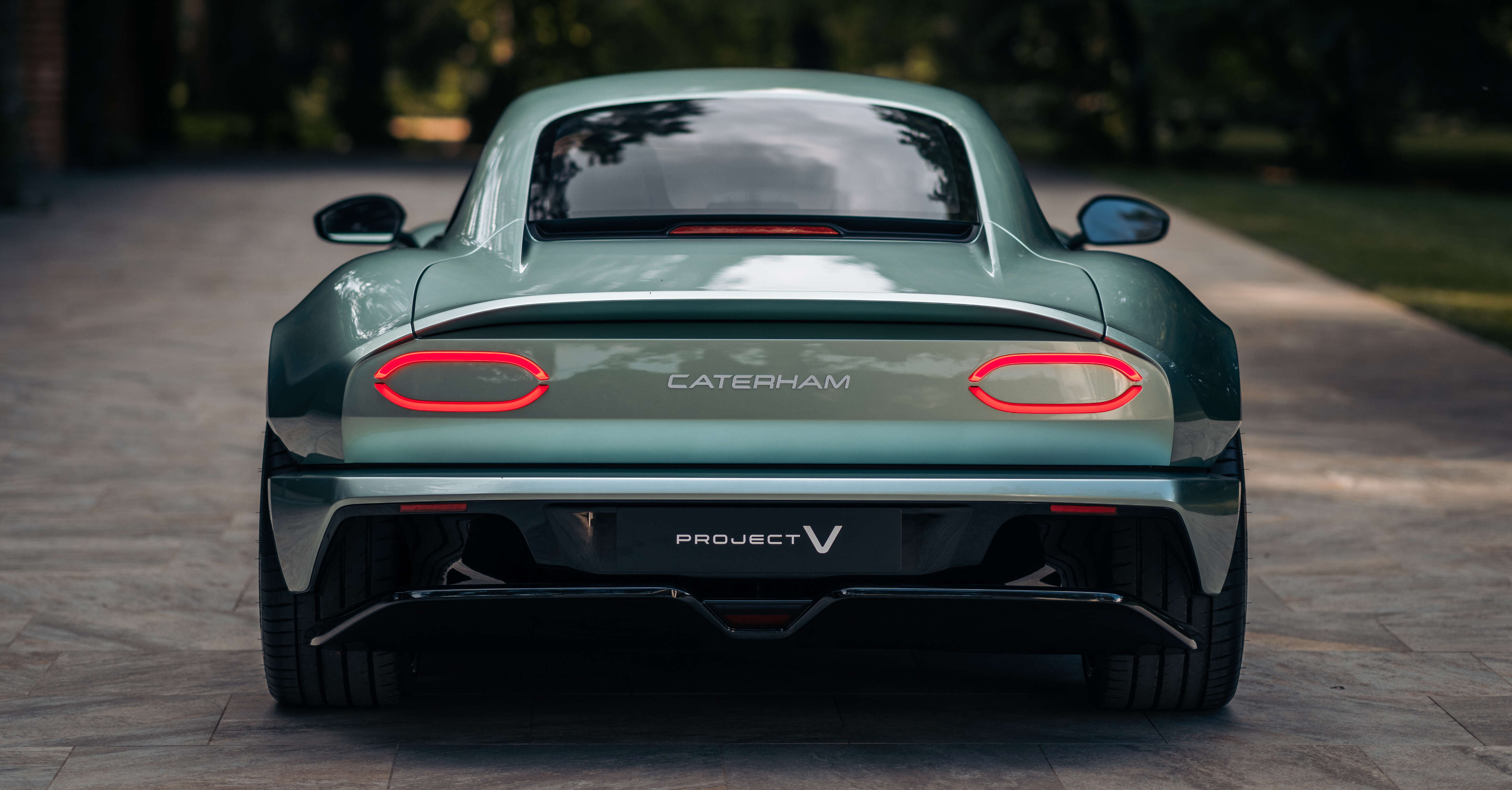
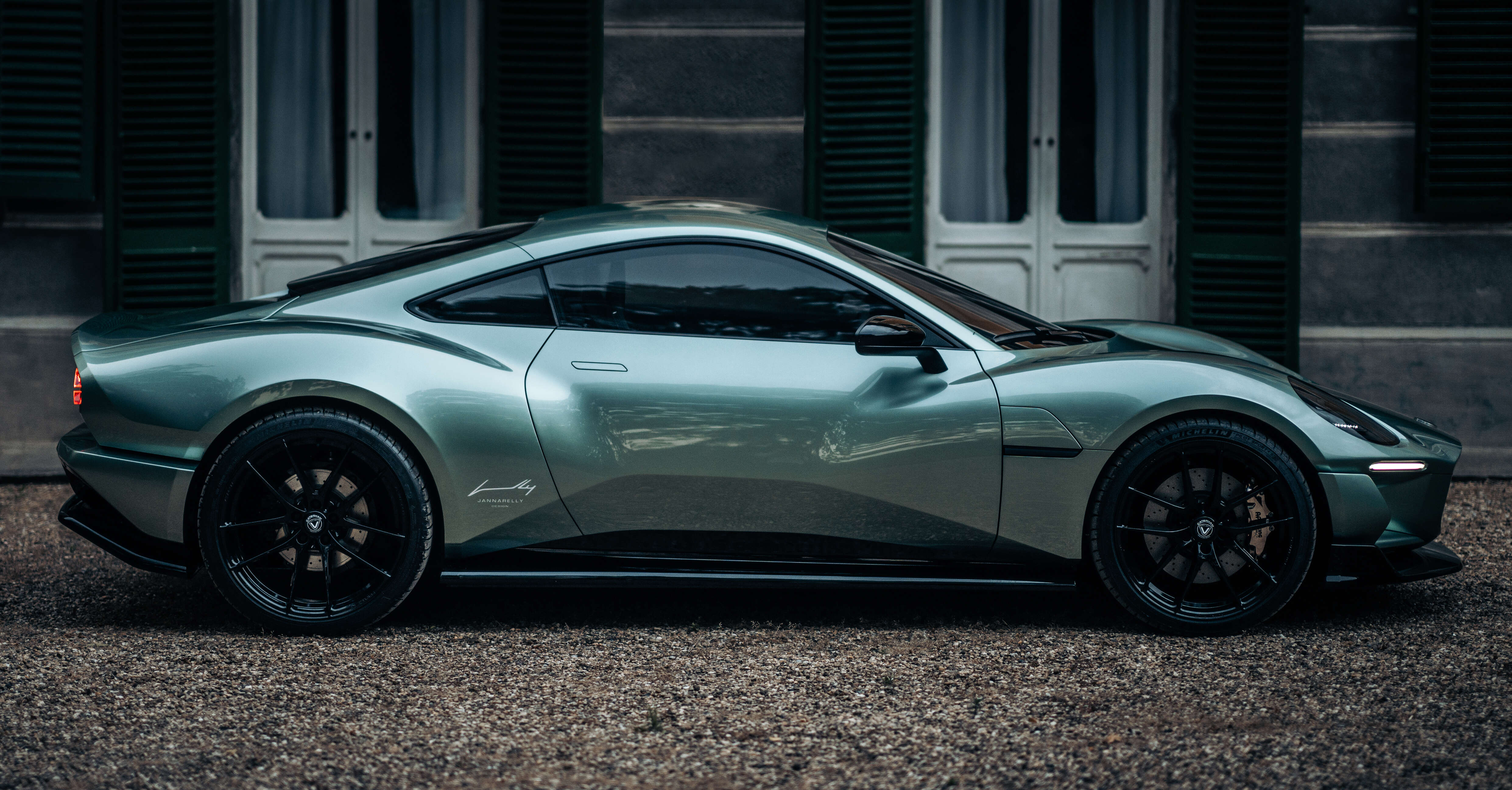
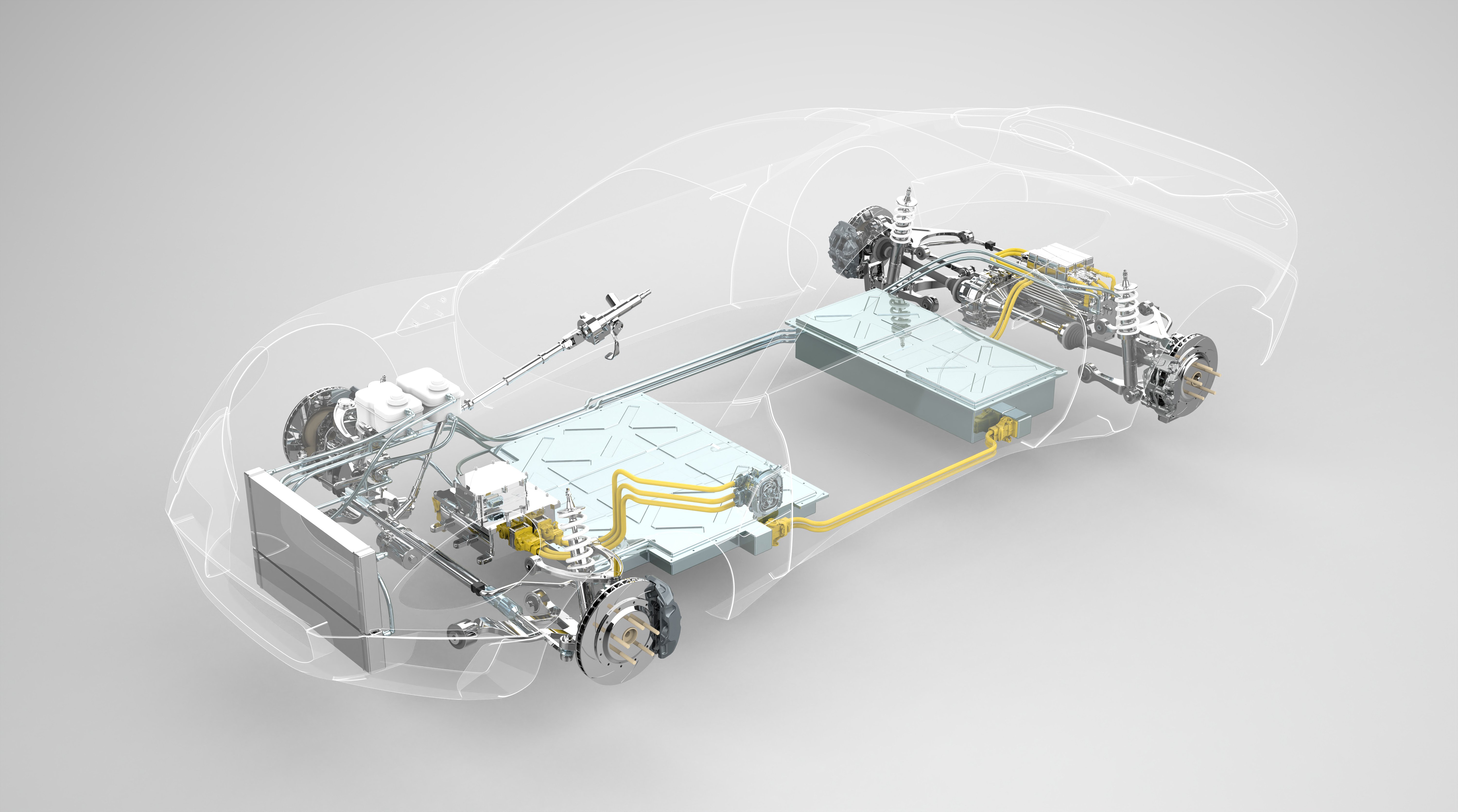
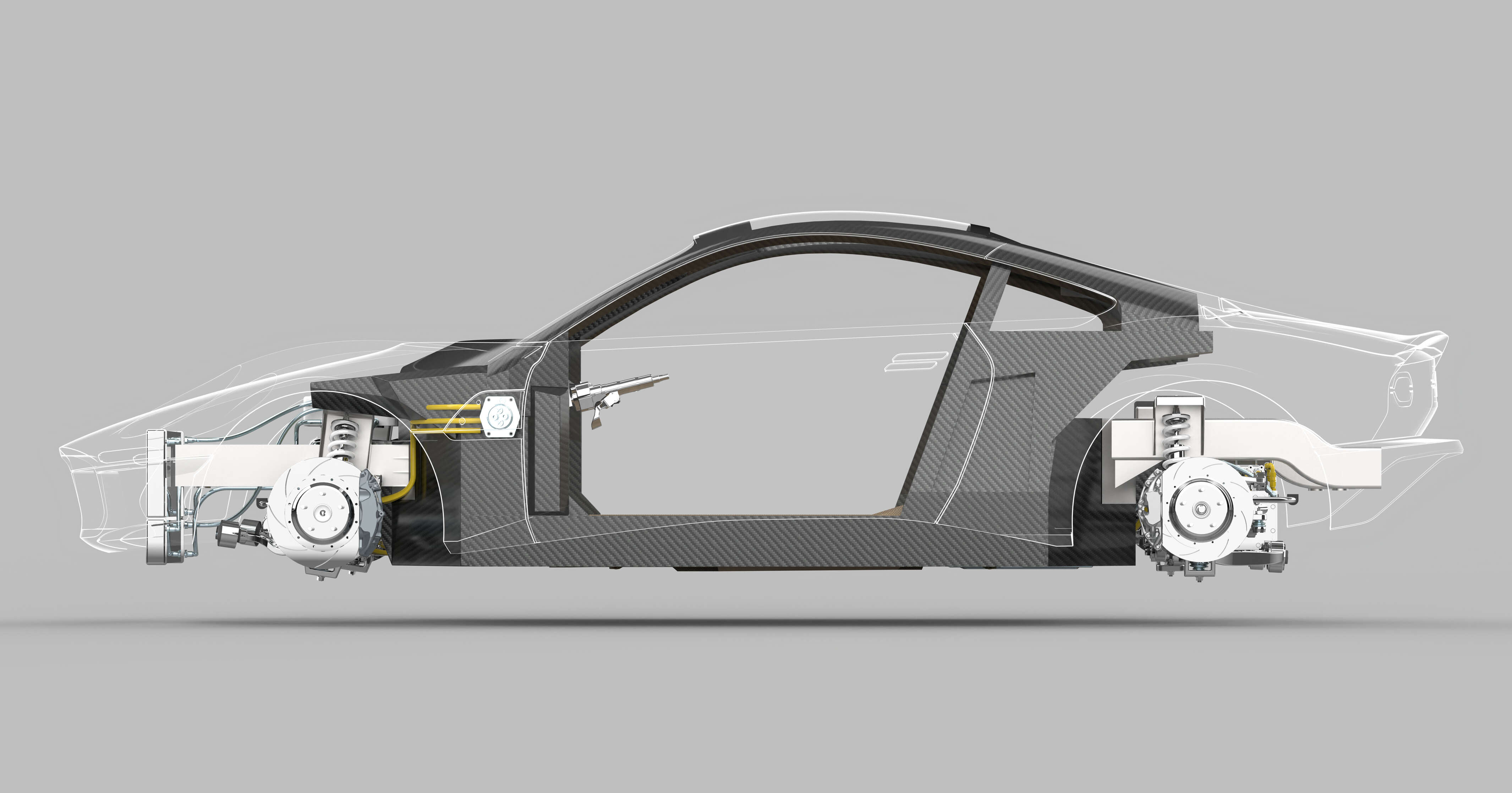
The Project V weighs 1,190 kg with all required fluids without occupants; for comparison, the petrol-powered Super Seven 1600 weighs 565 kg. The Project V is powered by a 272 PS permanent magnet synchronous motor that operates at 400 volts.
This is fed by a twin-pack 55 kWh lithium-ion battery offering a range of up to 400 km on the WLTP testing cycle, and can be recharged from 20-80% in 15 minutes using a 150 kW DC charger, according to Caterham. Performance-wise, the Project V is estimated to do the 0-100 km/h sprint benchmark in under 4.5 seconds, and reach a top speed of 230 km/h.
Its chassis employs a double wishbone layout for the front and rear suspension along with fully adjustable geometry, while steering is electrically assisted and disc brakes feature front and rear with high-performance calipers. Wheels measure 19 and 20 inches in diameter front and rear, respectively, and are shod in 235/35R19 and 285/30R20 Michelin Pilot Sport 4S tyres.
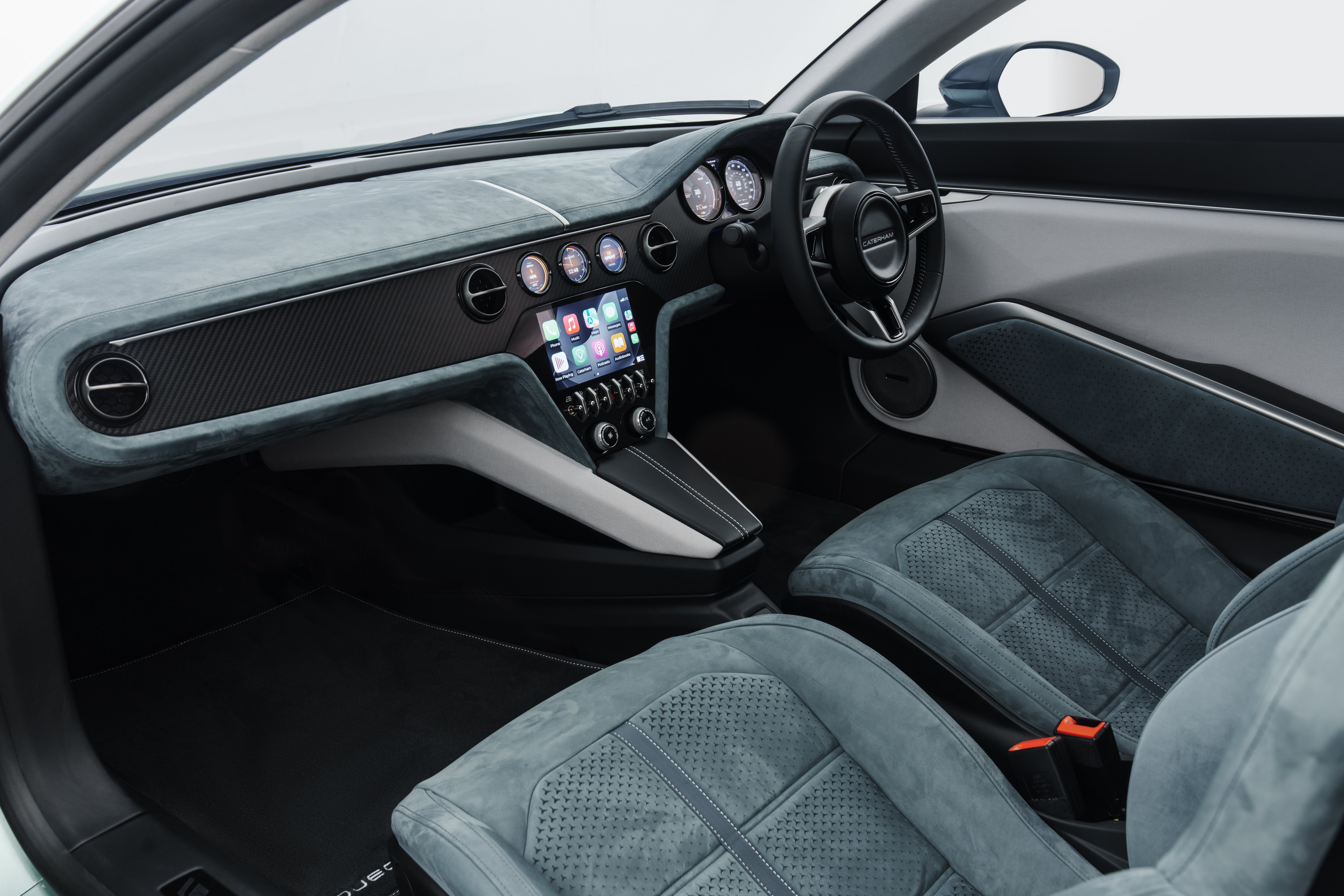
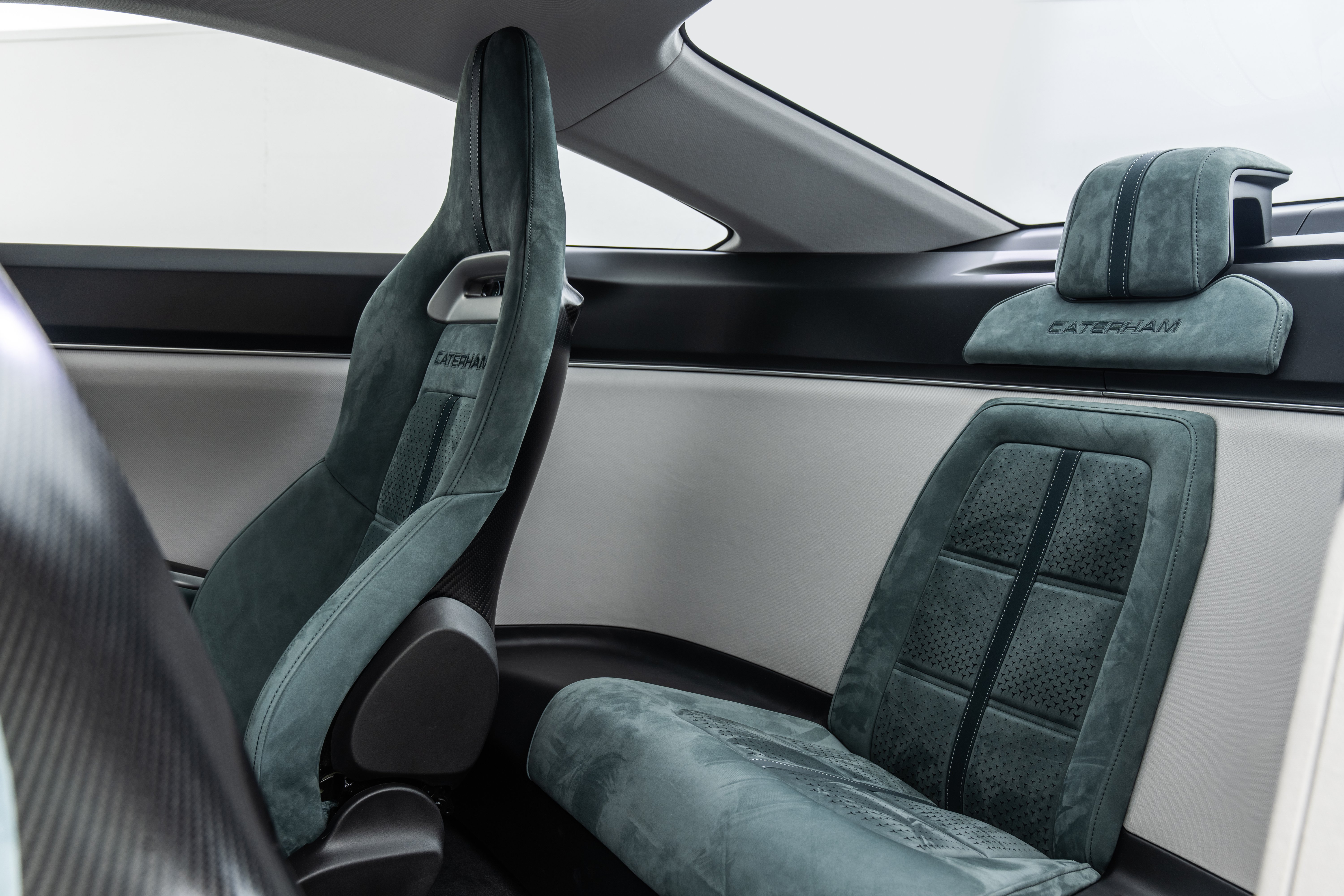
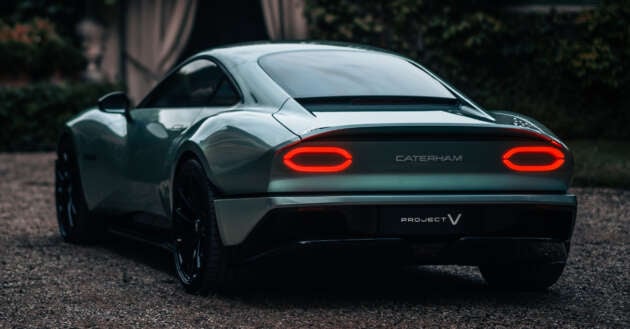
The show car employs a 2+1 seating layout, while a 2+2 is optional, and has been optimised for easier entry and egress, offering greater comfort for the rear seat passenger and better flexibility in how an owner may use the car.
A digital instrument panel provides key information, while a driver-focused infotainment unit offers smartphone mirroring. A trio of drive modes – Normal, Sport and Sprint – offer different acceleration and steering characteristics.
With engineering and manufacturing feasibility studies conducted through its development process, the production version of the Project V “could arrive” in late-2025 or early 2026, says Caterham, with prices targeted to start from 80,000 pounds sterling (RM475,320).
Looking to sell your car? Sell it with



